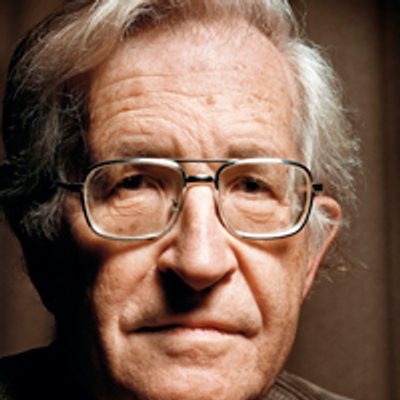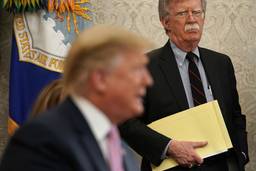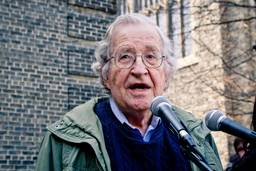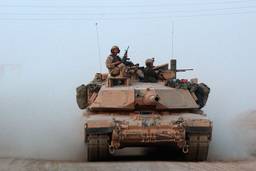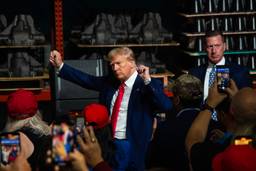Every powerful state relies on specialists whose task is to show that what the strong do is noble and just and, if the weak suffer, it is their fault.
In the West, these specialists are called “intellectuals” and, with marginal exceptions, they fulfill their task with skill and self-righteousness, however outlandish the claims, in this practice that traces back to the origins of recorded history.
With just that much background, let us turn to the so-called unipolar moment. Symbolized by the fall of the Berlin Wall 20 years ago, the collapse of the Soviet Union putatively left a unipolar world, with the United States as the sole global superpower and not merely the primary superpower, as it was before.
Within months, the George H. W. Bush administration outlined Washington’s new course: Everything will stay much the same, but with new pretexts.
We still need a huge military system, but for a new reason: the “technological sophistication” of Third World powers. We have to maintain the “defense industrial base” – a euphemism for state-supported high-tech industry.
We must maintain intervention forces directed at the energy-rich Middle East – where the significant threats to our interests “could not be laid at the Kremlin’s door,” contrary to decades of deceit.
All this was passed over quietly, barely reported. But for those who hope to understand the world, it is quite instructive.
The George W. Bush administration went far to the extreme of aggressive militarism and arrogant contempt. It was harshly condemned for these practices, even within the mainstream.
Bush’s second term was more moderate. Some of the most extreme figures were expelled: Donald Rumsfeld, Paul Wolfowitz, Douglas Feith and others. Vice President Richard Cheney could not be removed because he WAS the administration. Policy began to return toward the norm.
As Barack Obama came into office, former Secretary of State Condoleezza Rice predicted he would follow the policies of Bush’s second term, and that is pretty much what happened, apart from a different rhetorical style that seems to have charmed much of the world.
One basic difference between Bush and Obama was expressed very well in another era, by a senior adviser of the Kennedy administration at the height of the Cuban missile crisis.
Kennedy planners were making decisions that threatened Britain with obliteration, but they were not informing the British about it.
At that point the advisor defined the “special relationship” with Britain: “our lieutenant – the fashionable word is ‘partner.”’
Bush and his cohorts addressed the world as “our lieutenants.” Thus, in announcing the invasion of Iraq, they informed the United Nations that it could follow U.S. orders or be “irrelevant.” Such brazen arrogance naturally aroused hostility.
Obama adopts a different course. He politely greets the leaders and people of the world as “partners,” and only in private does he continue to treat them as “lieutenants.”
Foreign leaders much prefer this stance, and the public is also sometimes mesmerized by it. But it is wise to attend to deeds, not rhetoric and pleasant demeanor.
The current world system remains unipolar in one dimension: the arena of force. The United States spends almost as much as the rest of the world combined on its military and it is far more advanced in the technology of destruction.
The United States is also alone in having hundreds of global military bases and in occupying two countries in the crucial energy-producing regions.
NATO is part of the Cold War apparatus that Obama can deploy.
As the unipolar moment dawned, the fate of NATO came to the fore. The traditional justification for NATO was defense against Soviet aggression. With the USSR gone, the pretext evaporated. But NATO has been reshaped into a U.S.-run global intervention force, with special concern for control over energy.
Post-Cold War NATO has inexorably pushed to the east and south. Obama apparently intends to carry forward this expansion.
In July, on the eve of Obama’s first trip to Russia, Michael McFaul, his special assistant for national security and Russian and Eurasian affairs, informed the press, “We’re not going to reassure or give or trade anything with the Russians regarding NATO expansion or missile defense.”
McFaul was referring to U.S. missile defense programs in Eastern Europe and to NATO membership for Russia’s neighbors, Ukraine and Georgia, both steps understood by Western analysts to be serious threats to Russian security that would likely inflame international tensions.
A few weeks ago the Obama administration announced a readjustment of U.S. anti-missile systems in Eastern Europe. That led to a great deal of commentary and debate, which, as in the past, skillfully evaded the central issue.
Those systems are advertised as defense against an Iranian attack. But that cannot be the motive. The chance of Iran launching a missile attack, nuclear or not, is about at the level of an asteroid hitting the Earth – unless, of course, the ruling clerics have a fanatic death wish and want to see Iran instantly incinerated.
The purpose of the U.S. interception systems, if they ever work, is to prevent any retaliation to a U.S. or Israeli attack on Iran – that is, to eliminate any Iranian deterrent. In this regard, antimissile systems are a first-strike weapon, and that is understood on all sides. But that seems to be a fact best left in the shadows.
The Obama plan may represent less provocation to Russia but, rhetoric aside, it is irrelevant to defending Europe – except as a reaction to a U.S. or Israeli first strike against Iran.
The present nuclear standoff with Iran summons the Cold War’s horrors – and hypocrisies.
The outcry over Iran overlooks the Obama administration’s assurance that the Indo-U.S. nuclear agreement is exempt from the just-passed U.N. resolution on the Nuclear Non-Proliferation Treaty (NPT), which India greeted by announcing that it can now build nuclear weapons with the same destructive power as those in the arsenals of the world’s major nuclear powers, with yields up to 200 kilotons.
And, over the objections of the United States and Europe, the International Atomic Energy Agency called on Israel to join the NPT and open its nuclear facilities for inspection. Israel announced it would not cooperate.
Though the world is unipolar militarily, , since the 1970s it has become economically “tripolar,” with comparable centers in North America, Europe and northeast Asia. The global economy is becoming more diverse, particularly with the growth of Asian economies.
A world becoming truly multipolar, politically as well as economically, despite the resistance of the sole superpower, marks a progressive change in history.
© 2009, New York Times News Service

I hope you found this article important. Before you leave, I want to ask you to consider supporting our work with a donation. In These Times needs readers like you to help sustain our mission. We don’t depend on—or want—corporate advertising or deep-pocketed billionaires to fund our journalism. We’re supported by you, the reader, so we can focus on covering the issues that matter most to the progressive movement without fear or compromise.
Our work isn’t hidden behind a paywall because of people like you who support our journalism. We want to keep it that way. If you value the work we do and the movements we cover, please consider donating to In These Times.
